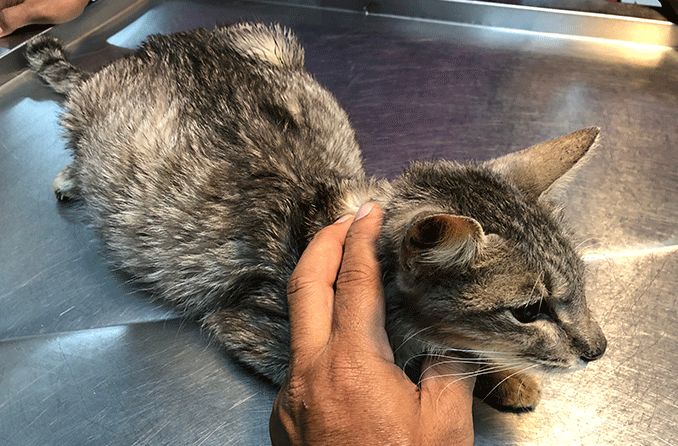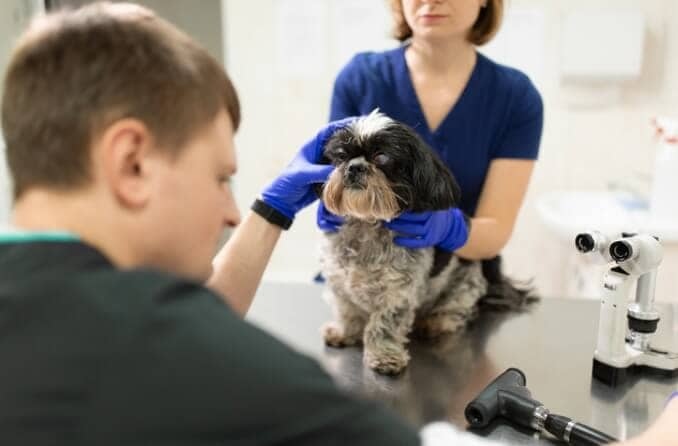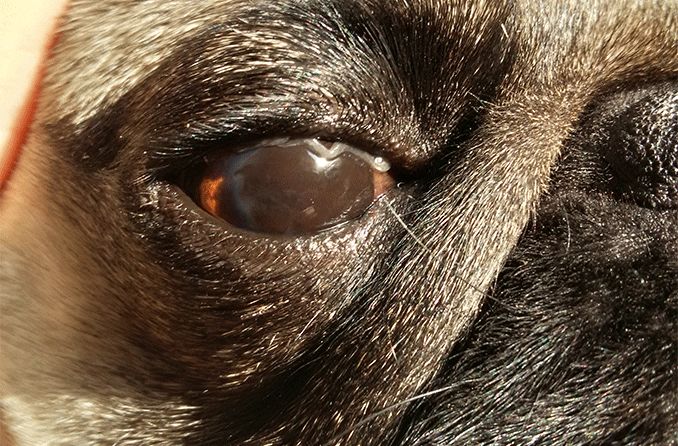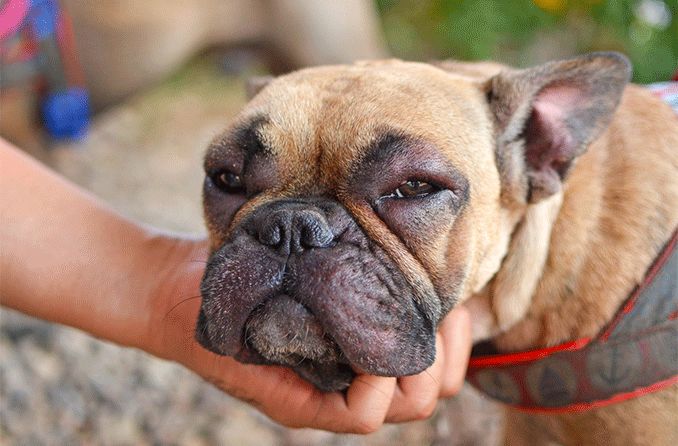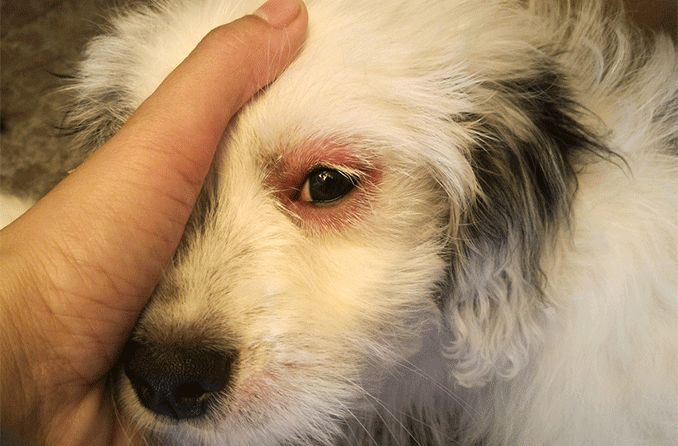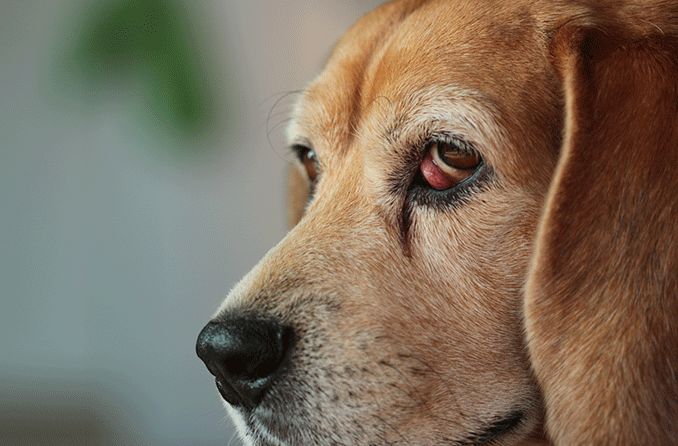Selecting the right product for your pet is crucial in resolving their eye-related problem. Some situations may only require saline eye drops, while others may need prescribed medication.
Check with your vet before beginning treatment to make sure the eye drops you use are appropriate — the wrong product can sometimes cause more harm than good for your dog’s condition.
- Saline eyewashes are available over the counter and can be used to clean dirt and debris from your dog’s eyes. They can also rinse away the occasional crustiness and gunk that gathers in the corner of the eyes and relieve mild allergies. Eyewashes may not help with redness, dryness or complex eye problems, however.
- Antibiotic eye drops such as ciprofloxacin (Ciloxan) may be prescribed for conditions such as canine conjunctivitis or keratitis.
- Steroid eye drops can be used to treat eye infections and severe allergies. These eye drops require a prescription from your vet. They must not be used if your dog’s cornea is damaged.
- Antibacterial eye drops, wipes and other topical products used for cleansing and treating eye irritation can be found at pet stores, but be cautious about using them before consulting a vet.
- Eye drops for canine glaucoma such as dorzolamide (Cosopt and Trusopt) or timolol (Timoptic and Betimol) may be prescribed as part of a treatment plan.
- Other ophthalmic medications used to treat dry eyes in dogs may include cyclosporine (Opptimune) or tacrolimus. These medications are designed to increase tear production and replace tear film.
Your veterinarian may recommend topical eye ointments as an alternative to eye drops depending on your dog’s condition. You likely will not need to apply an ointment as often as you would eye drops (because of the product’s consistency), but be sure to follow your vet’s instructions.
Eye drops (and ointments) are specially formulated to target the problem without harming your dog’s eyes. If your dog experiences negative side effects or a worsening condition, contact your veterinarian as soon as possible.
SEE RELATED: Why is my dog’s eye swollen?
How to apply eye drops to your dog’s eyes
It’s important to correctly apply eye drops so that your dog can receive the right dosage of medicine to heal properly. Be sure to follow the directions given on the bottle and the instructions (if any) given by your vet.
Here are some steps for giving your dog eye drops:
- Wash your hands thoroughly before and after giving the drops.
- Use a warm, wet washcloth to gently clean the area around your dog’s eye.
- Cradle your dog’s head or have a trusted assistant do so.
- Hold the medicine bottle with your dominant thumb and index finger, and pull down your dog’s lower lid with your opposite thumb (the rest of your fingers on that hand can support your dog’s jaw if needed).
- Place the bottle close to the eye without touching it. Aim for the center of the eye and squeeze the prescribed amount into your dog’s eye.
- Your dog will naturally blink a few times afterward, which will help spread the medicine across the eye.
Don’t forget to praise your dog before, during and after the process. (And give them a treat when it’s all done!) A little encouragement goes a long way and is sure to make it easier for both the pet and pet parent.
Can human eye drops be used for dogs?
Do not give your dog any human eye drops, including natural tears, before contacting your veterinarian for advice. Ingredients suitable for humans may not be suitable for dogs (and vice versa).
Redness-relieving drops can also contain ingredients such as naphazoline that can be harmful to dogs when ingested. Some glaucoma eye drops also include an ingredient called brimonidine that is poisonous for your pet. Both of these ingredients can cause blood pressure and heart rate to drop significantly, even if your dog was only exposed to a small amount.
Tips for purchasing dog eye care products
All pet parents want the best for their animals when choosing the right products and care. Before purchasing and using eye drops for your dog, consider the following tips:
- Consult a veterinarian before giving your pet any new medication.
- Always buy products from a verified source.
- Inspect packaging when buying anything in person. If the packaging has been tampered with, it’s best to avoid it.
- Use eye drops and other medications only as directed.
It may also be helpful to read product reviews before you buy anything. Do remember that every dog is different, and some formulas may work better or worse than others for your pooch.
Caring for your dog’s overall eye health
Before beginning any treatment at home, talk to your veterinarian to make sure it is suitable for your dog. Like humans, every dog has their own specific needs. Canines can’t speak for themselves, but a vet can understand the problem and find the right solution.
It is a good idea to inspect your pet’s eyes every day for debris, discharge or any abnormalities that may cause irritation. Many cases of eye gunk or discharge are normal and can be wiped away with a warm washcloth. Sometimes, though, eye discharge in dogs may indicate a problem that needs medical attention.
Also, make sure to keep your dog’s hair trimmed out of their eyes and schedule routine checkups for overall health.
READ NEXT: Cataracts in dogs

